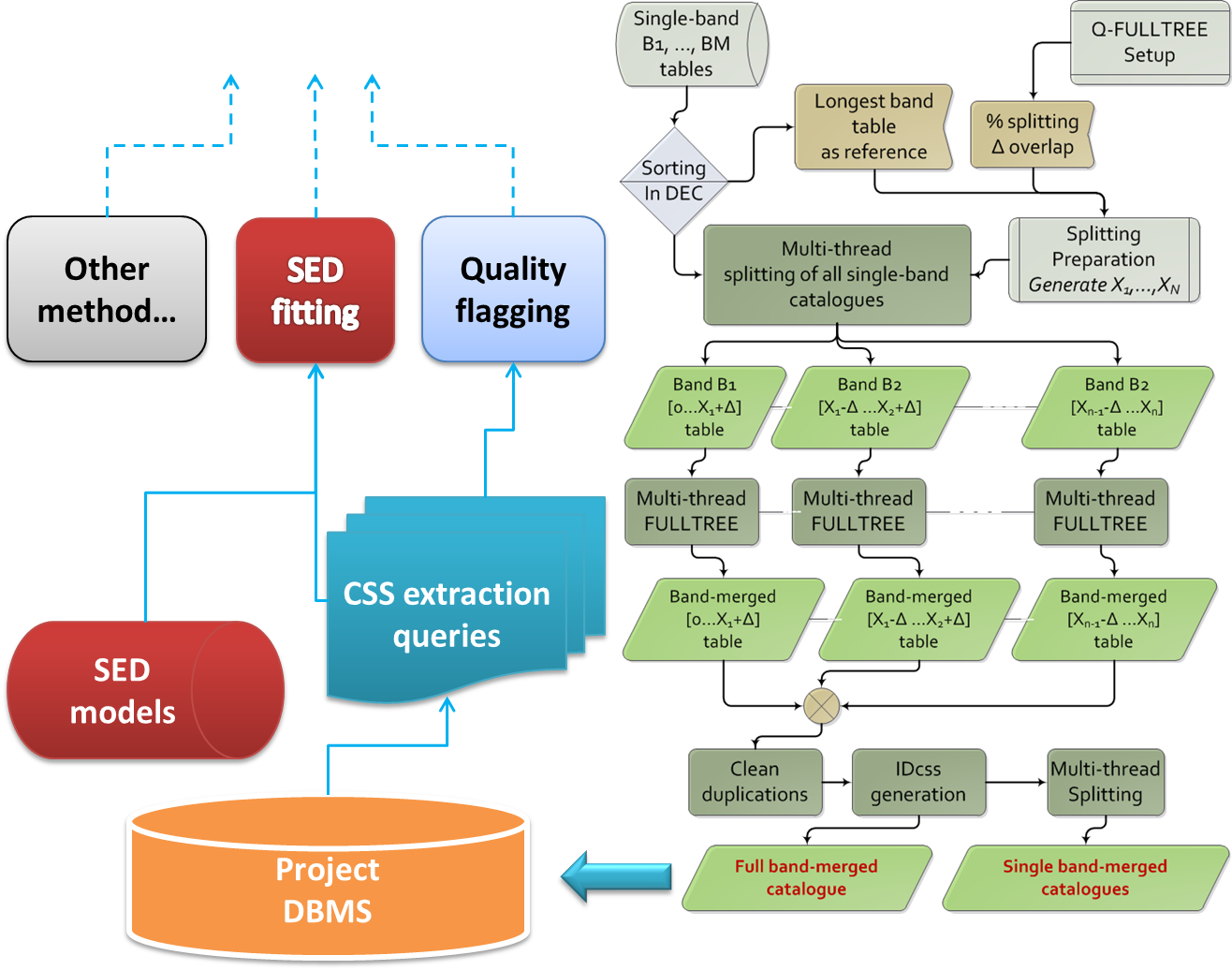Q-FULLTREE
Q-FULLTREE (Quick Full TREe on Ellipse) is a data mining approach to a specific activity of the ViaLactea project, for instance the development of a band-merged catalogue, whose entries consist of sources with associated counterparts at different wavelengths.
According to the preliminary requirements and commitments, the produced band-merged catalogue includes a refined list of band-merged sources, by storing all partial/full candidate matches among sources at different wavelength, and assigns a series of quality flags, giving a score to the reliability of each multiple-band match.
The original FULLTREE method is based on the positional cross-match among sources at different wavelengths. According to basic positional order relationships imposed by the variable spatial resolution and variation of position angle at different wavelengths, the background guideline is always the search for higher resolution sources within an elliptical region centred on the lower resolution counterpart and dimensionally limited by its two FWHM values, defining the two axes of the ellipse.
The current release of the software system, named Q-FULLTREE, is an improved version of the original FULLTREE package, capable to perform calculations with a speedup increase of about 200x with respect to the previous release.
In case there is more than one higher resolution source included in the ellipse, the value of the ellipse formula provides a by-product reliable and fast distance estimation of the object from the ellipse centre that can be used to assign a different score to all the candidate counterparts included in the same ellipse. Furthermore this scoring system takes implicitly into account the relationship among candidate sources, their bands and dimensions of ellipses.
According to the requirements, the FULLTREE method stores all partial/full band-merging candidate matches, in order to avoid any loss of potential information, by focusing its action to the assignment of a quality flag and a score to each candidate match. This flagging system is useful to generate an ordered reliability index for each candidate match, also helpful to navigate a posteriori into the catalogue and to make easy several kinds of correlated information extraction. The quality flagging is based on a simple criterion, by combining the multiple values of the ellipse function calculations along a sequence of multiple band matching.

After having generated all partial/full n-band CSS and their MS values, the various sequences need to be organized in order to make easy the navigation into their entries and their use within the project workflows.
The main product is a general catalogue containing the complete set of CSS generated by the proposed band-merging method. This catalogue is sufficiently general such that it can be used to perform a wide spectrum of merged sequence extractions, in order to perform any kind of further statistical, quality, visualization, cross-correlation and multivariate analyses.

Besides the main catalogue, the FULLTREE system produces a set of single-band catalogues, by reporting for each source the list of all CSS containing that source, each one with the associated Merit Score, useful to help decisions in case of multiple candidates.




